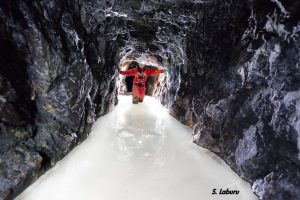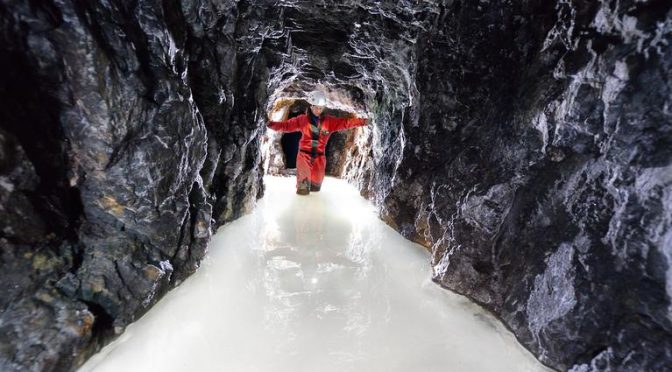The world is full of natural wonders and every corner of the globe can boast spectacular sites. It seems, though, that the Basque Country has a disproportionate number of unique phenomena. From the flysch of Zumaia to a number of wondrous waterfalls to an amazing network of caves and caverns, the Basque Country is teeming with sites to behold. Buried amongst those caverns, though, is perhaps one of the most unique natural phenomena of all: a river of moonmilk.

- Until 2004, all the moonmilk deposits known in the world were stagnant. However, in 2004, a group of spelunkers announced they had discovered an actual river of moonmilk in a cave on Mount Ernio, in the valley of Aizarna of Gipuzkoa. This river flows for some 150 meters, or nearly 500 feet. The river looks like milk, but with a consistency closer to liquid yogurt. In fact, it is one of two such rivers known in the world, the second also in Gipuzkoa.
- Moonmilk, or leche de luna in Spanish and ilargi esnea in Euskara, consists primarily of minerals such as carbonate, calcium, and magnesium. These minerals remain in microscopic form instead of crystallizing into larger crystals. Thus, moonmilk has a consistency that is gooey and pasty when wet. And in most places, it is in a semi-solid state, not liquid like the river in Aizarna. There is some debate as to whether bacteria plays a role in the formation of moonmilk. Some deposits have microorganisms, but others don’t.
- Of course, with something so exotic, there are other stories of its origins. Some believed moonmilk formed from the rays of the moon. Others thought that gnomes put it in caves so that people could use it on their animals (see below). The term moonmilk, or the German equivalent, was coined in the sixteenth century when, in Switzerland, the pasty semi-solid form was found in a cave that was then called Höhle Mondmilchloch, or the cave of moonmilk.
- While this was a wonderful discovery for scientists, local residents had known about the river for, essentially, ever. When it would rain, a milky white substance would leak out of the mines, even reaching the roads. The locals simply never gave it much thought, it would seem.
- Moonmilk has a long history of use as both a healing ointment and beauty aid. In Europe, people would rub moonmilk on cuts sustained by their livestock, believing it would heal them faster. And, indeed, analysis has shown that moonmilk contains actinomycetes which is a producer of antibiotics. And in China, a bronze jar over 2,700 years old was discovered with a mixture of moonmilk and animal fat, thought to be used as a cosmetic face cream.
A full list of all of Buber’s Basque Facts of the Week can be found in the Archive.
Primary sources: Moonmilk and Cave-dwelling Microbes by John Roth; Moonmilk, Wikipedia
Discover more from Buber's Basque Page
Subscribe to get the latest posts sent to your email.


